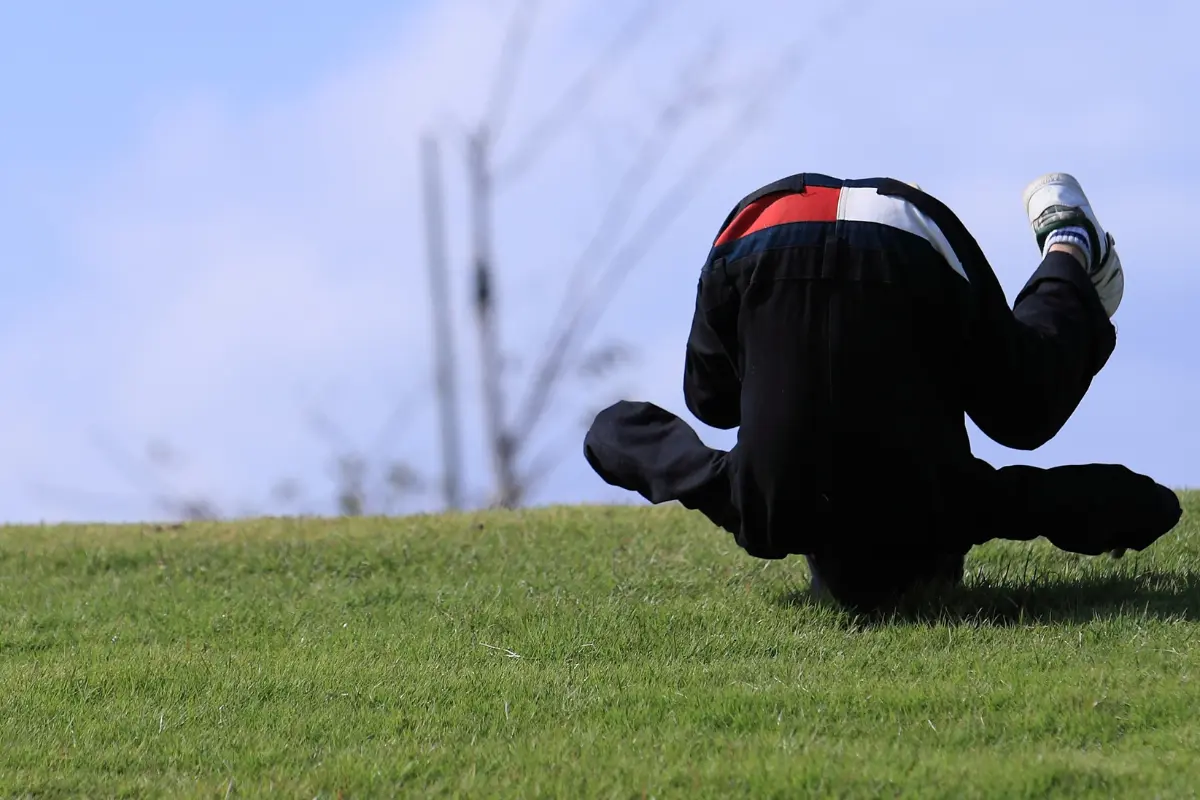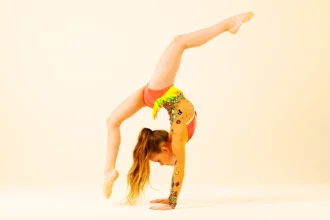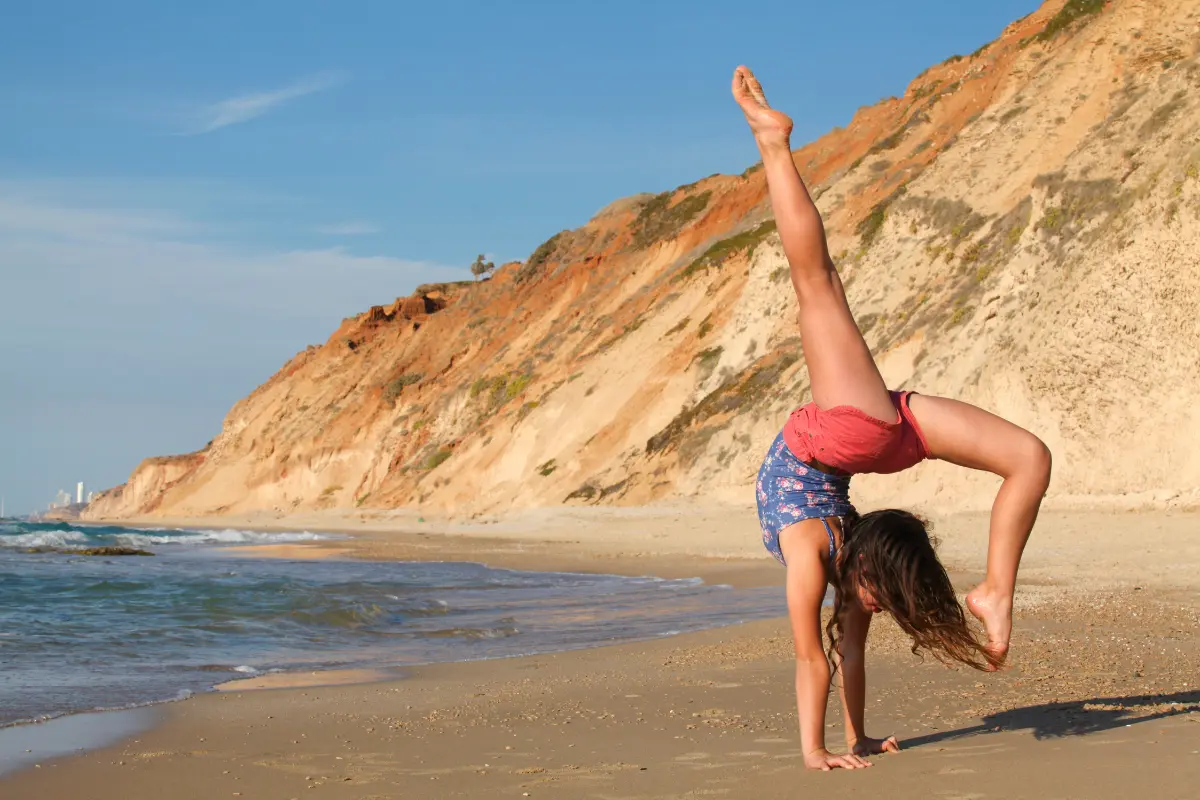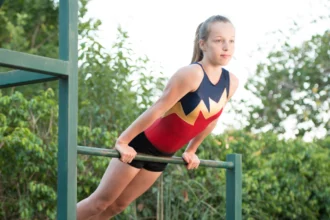Gymnastics thrives on pushing the boundaries of human strength, flexibility, and precision. However, some skills, once considered revolutionary, were deemed too dangerous to continue in competition. While showcasing impressive athleticism, these moves posed significant risks to the athletes performing them.
Here’s a detailed look at the top 10 dangerous skills that have been banned in gymnastics:
1. Korbut Flip
The Korbut Flip, also known as the “Dead Loop,” is a gymnastic move that became synonymous with daring and innovation in the sport. This move involves a gymnast standing on top of the high bar, performing a backward salto (flip), and regrabbing the bar mid-air before swinging toward the low bar.
Korbut executed the move in the 1972 Olympics, and it captivated audiences due to its stunning complexity and daring nature. However, after being performed in competition, it was banned due to the extreme danger posed by standing on top of the bar.
The move was not only risky in terms of falling but also disrupted the flow of routines. In 1985, the FIG banned all skills that required a gymnast to stand on top of the bar, marking the end of the Korbut Flip’s place in gymnastics.
2. Mukhina Flip
Like the Korbut Flip, the Mukhina Flip involves standing on top of the high bar. However, this skill takes things a step further. It includes a 360-degree turn before the gymnast performs a backward salto with a full twist to a hanging position.
Named after Soviet gymnast Elena Mukhina, this move was banned for similar reasons: standing on top of the high bar posed a significant safety risk, and the twist made the skill even more dangerous. Despite its visual appeal, the Mukhina Flip was ultimately deemed too risky for competitive gymnastics.
3. Thomas Salto
The Thomas Salto, named after American gymnast Kurt Thomas, was a daring skill that involved a back salto (flip) with one and a half twists. The gymnast would land in a tucked position and then roll out of the move.
While this may sound impressive, the Thomas Salto became infamous for the precision required in the landing. If the gymnast under-rotated, the risk of neck or spinal injury was high.
The most notable accident related to this skill occurred when Elena Mukhina injured her neck and was left permanently quadriplegic. Due to the high risk of injury, the skill was banned in both men’s and women’s gymnastics, with the men officially prohibiting it in the 2017-2020 Code of Points.
4. Roll-out Skills
A roll-out skill involves performing a salto or flip but instead of landing on the feet, the gymnast rolls out of the move to avoid direct contact with the floor or apparatus. One example of this skill is the Thomas Salto (described above), but roll-out skills extend beyond that to various other moves.
These skills were banned due to the high risk of neck injuries caused by the precision required in landing. If gymnasts failed to land correctly, they risked serious injury, including spinal damage.
Roll-out skills were banned in women’s gymnastics in the 1990s, and by 2017, men’s gymnastics also banned these dangerous skills.
5. Produnova Vault
The Produnova Vault is one of the most dangerous vaults ever performed in gymnastics, often referred to as the “vault of death” due to the immense risk involved. Named after Russian gymnast Yelena Produnova, who first performed the vault at the 1999 World Championships, this move requires extraordinary power, speed, and precision.
The skill involves a double front flip in the vault, one of the most difficult and high-risk maneuvers in the sport. Unlike most vaults, which involve a single flip or twist, the Produnova requires the gymnast to perform two complete flips in the air before landing on their feet.
The gymnast has to generate enough speed and height to complete the flips, but the landing must be just as precise. A small misstep on the landing can result in broken ankles, neck injuries, or worse. While it is still sometimes performed in certain competitions, it is banned in many cases due to the high potential for injury.
6. Belly Beats
Belly Beats, or simply “beats,” were a once-popular skill on the high bar. This move involved a gymnast swinging from a handstand position and forcefully slamming their hips into the low bar to generate momentum for their next move.
This technique helped gymnasts transition between moves and maintain flow. However, the intense impact on the hips created a serious risk of injury if performed incorrectly. As gymnasts began using wider bars that allowed for more space during bar-to-bar movements, belly beats became obsolete and were eventually banned for safety reasons.
7. The Quad Series
The Quad Series was a routine on the balance beam that involved connecting four skills in a row without a break. This often included back handsprings, layouts, and various combinations.
Gymnasts in the 1980s and early 1990s executed the quad series to showcase their stamina and technical skill. However, changes in the code of points in 1997 lowered the value of such long sequences, and gymnasts were no longer able to earn connection bonuses for them.
The sheer number of complex elements in a single series also made it a high-risk move, and after its ban, gymnasts typically performed only a three-element series rather than four on the beam.
8. The Saliva Mount
The Saliva Mount, named after Romanian gymnast Daniela Salivas, was a complex move on the balance beam. It involved the gymnast jumping into a shoulder stand and then transitioning into a chest stand.
While this mount helped Salivas secure a gold medal at the 1988 Seoul Olympics, it was eventually deemed too risky for modern gymnasts.
The potential for falling from such a complex position outweighed the reward of performing the mount, especially after watching Alicia Sacramone’s disastrous fall from her mount at the 2008 Beijing Olympics. As a result, the Saliva Mount was phased out in favor of simpler, safer beam mounts.
9. Back-to-Back Tumbles
Back-to-back tumbling refers to a gymnast tumbling from one corner of the floor to another and then back again, without stopping. This skill was once performed frequently by gymnasts like Daniela Salivas, Oksana Chusovitina, and Dominique Dawes. However, the technique has become less common as gymnastics has evolved.
The focus shifted to clean landings and connecting skills with greater form, meaning continuous tumbling sequences were less effective and too risky, as they increased the chance for mistakes. As a result, back-to-back tumbling sequences became obsolete.
10. The Kich Dismount
The Kich Dismount was a challenging bar dismount performed by Nadia Comăneci during the 1976 Olympics. It began like a typical toe-front dismount but included a half twist into a backflip. At the time, it was one of the most difficult dismounts in gymnastics, requiring incredible skill and precision.
However, as more challenging dismounts were introduced, the Kich Dismount lost its value and was eventually phased out of competition. The increased difficulty of other dismounts and the evolution of gymnastics routines led to the Kich Dismount being abandoned.
Why Were These Skills Banned?
The gymnastics skills listed above were banned for a variety of reasons, but the central theme behind these decisions is safety. Here are the key reasons why these specific skills were eventually banned:
- Risk of Serious Injury
The main reason most of these skills were banned is that they were too dangerous. Skills like the Produnova Vault and Thomas Salto required precise landings, and any mistake could result in injuries like broken bones, neck injuries, or even paralysis. The more complicated the skill, the higher the risk of getting hurt.
- Unstable or Risky Positions
Some moves required gymnasts to balance in dangerous positions. For example, the Korbut Flip involved standing on top of the high bar, which was very risky. If a gymnast fell from that height, it could lead to serious injuries. Skills like this were banned to prevent falls from dangerous heights.
- Precise Landing and Timing
Certain skills, like the Roll-out and Back-to-Back Tumbles, needed near-perfect timing. Gymnasts had to land in exactly the right position, or else they risked falling badly. Misjudging a landing could cause serious injuries, especially in skills like the Thomas Salto, where the gymnast needed perfect timing to avoid dangerous falls.
- Unpredictable Outcomes
Some moves, such as Belly Beats and the Saliva Mount, were very unpredictable. In Belly Beats, gymnasts swung their hips into the low bar to build momentum. If the bar wasn’t set right, the gymnast could lose control and fall. Similarly, the Saliva Mount on the balance beam left gymnasts in a risky position that could lead to dangerous falls if not done perfectly.
- Lower Value in Competition
Some skills were banned because they didn’t score well under new rules. For example, the Quad Series on the balance beam used to be popular, but a change in the rules in 1997 made long combinations less valuable. As a result, gymnasts stopped performing these dangerous skills in favor of simpler, safer moves that were easier to control.
- Safer Alternatives
As gymnastics evolved, safer alternatives to these dangerous skills were created. New techniques allowed gymnasts to do similar moves with better control and less risk of injury. For example, the Produnova Vault was replaced by vaults that are safer while still impressive in difficulty.
Final Thought
Many of the banned skills listed above were once groundbreaking. However, as gymnastics evolved, it became clear that the safety of the athletes had to come first. Banning these dangerous skills ensures that gymnasts can continue to perform amazing feats while minimizing the risk of serious injury.
Do you think gymnastics is the hardest sport? While the debate may never have a clear answer, gymnastics certainly stands out as one of the most physically demanding and mentally taxing sports.












